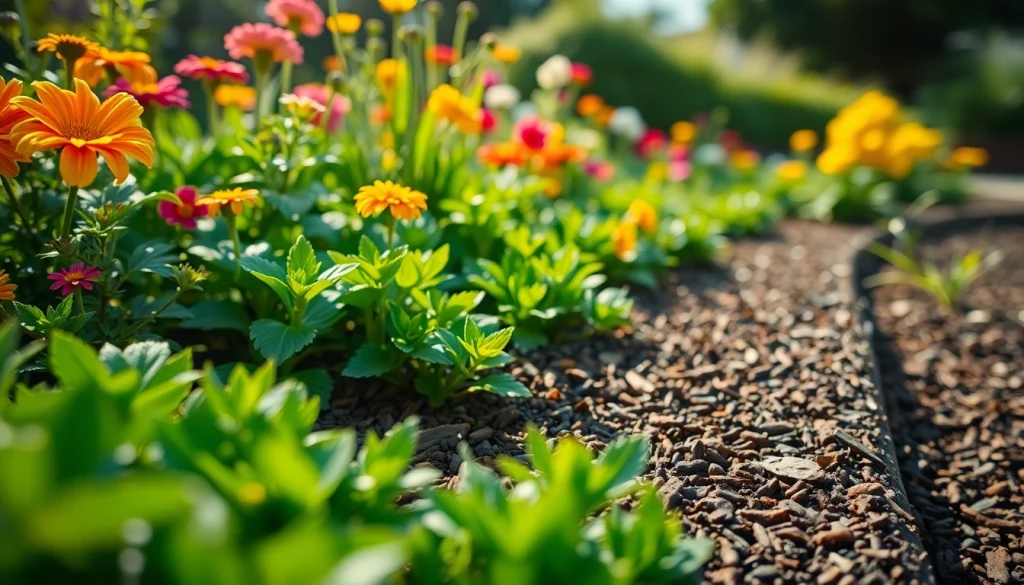Understanding the Importance of Garden Maintenance
Creating and maintaining a beautiful garden is a rewarding and fulfilling endeavor that can significantly enhance the value of your home and improve your overall quality of life. Regular garden maintenance is crucial to ensuring your plants thrive, your aesthetic appeal is upheld, and your outdoor space remains inviting and enjoyable.
Defining Garden Maintenance
Garden maintenance encompasses a wide range of tasks aimed at keeping your garden healthy, beautiful, and functional. This includes weeding, watering, pruning, fertilizing, mulching, and pest control, among others. By attending to these essential chores, gardeners can nurture thriving landscapes, promote plant health, and prepare for the changing seasons.
Benefits of Regular Maintenance
Investing time and resources into regular garden maintenance offers numerous benefits, including:
- Enhanced Plant Health: Regular maintenance ensures plants receive adequate water, nutrients, and sunlight, promoting their growth and resilience against diseases and pests.
- Aesthetic Appeal: A well-maintained garden is visually appealing and can significantly increase your home’s curb appeal.
- Weed Control: Weeds can compete with your plants for resources. Regular maintenance helps keep them at bay.
- Environmental Benefits: Healthy gardens contribute to biodiversity, support pollinators, and can even help prevent soil erosion.
- Stress Relief: Gardening is not only a creative outlet but also a therapeutic activity that can alleviate stress and promote mindfulness.
Common Challenges in Garden Care
While maintaining a garden can be immensely rewarding, several challenges often arise, such as:
- Pest Infestations: Unwanted insects and diseases can devastate your plants if not promptly addressed.
- Unpredictable Weather: Extreme weather conditions can pose risks to plant survival and growth patterns.
- Lack of Knowledge: Inexperienced gardeners may struggle with identifying plant needs and optimal care practices.
- Time Constraints: Balancing garden maintenance with other responsibilities can be difficult for many homeowners.
Seasonal Garden Maintenance Checklists
Gardening tasks can often be organized by season, ensuring each stage of your plants’ life cycles is met with appropriate care. Here’s a breakdown of essential tasks by season.
Spring: Preparing Your Garden for Growth
Spring is a time of rejuvenation. As the last frost passes, it’s time to:
- Clean up debris from winter, including fallen branches and dead leaves.
- Trim perennials and ornamental grasses to encourage new growth.
- Start planting cool-season crops and annuals after ensuring the soil is ready.
- Test and amend the soil with compost or fertilizers to enhance nutrient levels.
- Check irrigation systems for any repairs before the summer heat sets in.
Summer: Sustaining Plant Health
Summer requires a focus on hydration and pest management. Key tasks include:
- Regularly watering plants, especially during dry spells, ensuring deep watering to encourage root growth.
- Mulching around plants to retain moisture and suppress weeds.
- Pruning spent flowers to encourage continuous blooming.
- Monitoring for pests and diseases, applying organic or conventional treatments as necessary.
- Harvesting ripe fruits and vegetables to promote further production.
Fall: Preparing for Winter
As temperatures drop, preparing your garden for winter is crucial. Follow these steps:
- Remove dead plants and debris to prevent pests and diseases over winter.
- Collect and compost fallen leaves.
- Plant bulbs for spring blooms and evergreen plants for year-round appeal.
- Adjust mulching techniques to protect roots during cold months.
- Winterize tools and equipment for longer life.
Best Practices for Effective Garden Maintenance
Implementing best practices in garden maintenance helps enhance efficiency and effectiveness in your gardening tasks.
Watering Techniques for Optimal Growth
Watering is arguably the most critical aspect of garden maintenance. Consider these techniques:
- Morning Watering: Watering in the early morning reduces evaporation and allows plants to absorb moisture before the heat of the day.
- Soaker Hoses: Using soaker hoses can deeply saturate the soil and save water.
- Mulch Application: A good layer of mulch can reduce the amount of water required by minimizing evaporation.
- Check Soil Moisture: Invest in a soil moisture meter to provide insight into the moisture level before watering.
Weeding and Pest Control Strategies
Weeds and pests can dramatically impact garden health. Here are effective strategies for managing both:
- Regular Weeding: Incorporate weeding into your routine garden maintenance to avoid weed infestation. Hand-pulling is effective for small areas, while hoes can cover larger expanses.
- Companion Planting: Plant certain plants together to naturally deter pests (e.g., planting marigolds among vegetables).
- Pesticide Alternatives: Use organic solutions such as neem oil or insecticidal soap as preventative measures.
- Encourage Beneficial Insects: Attract pollinators and pest predators through diverse planting and organic practices.
Fertilization and Soil Health Tips
Healthy soil is the foundation of a vibrant garden. Best practices include:
- Soil Testing: Conduct soil tests to determine pH and nutrient levels, allowing for targeted amendments.
- Organic Fertilizers: Use well-composted manure or organic fertilizers to enrich the soil sustainably.
- Rotate Crops: Practice crop rotation to maintain soil nutrients and reduce the risk of disease.
- Cover Crops: Plant cover crops in off-seasons to improve soil structure and nutrient content.
Tools and Equipment for Efficient Garden Maintenance
Having the right tools can drastically improve the efficiency of your gardening efforts. Here’s a rundown of essential equipment.
Essential Hand Tools for Home Gardeners
Home gardeners should have a few key hand tools on hand:
- Hand Trowel: Essential for planting and transplanting.
- Pruners: Necessary for trimming stems and branches.
- Weeders: Tools designed to easily uproot weeds.
- Gloves: Protect your hands while working in the garden.
Advanced Equipment for Larger Gardens
If managing a larger garden, consider these tools:
- Rototiller: Useful for preparing and aerating larger areas.
- Lawn Mower: Ensures clean and even grass height.
- Hedge Trimmer: Helps shape and maintain hedges and shrubs efficiently.
- Compost Bin: An essential for creating rich compost that can nourish your garden.
How to Properly Maintain Your Tools
Maintenance of gardening tools is essential for longevity and efficiency:
- Clean After Use: Remove dirt and residues after each use to prevent rust and decay.
- Sharpen Blades: Keep cutting tools sharp for more efficient work and healthier cuts.
- Store Properly: Keep tools in a dry place and hang or store them correctly to avoid damage.
- Inspect Regularly: Check tools periodically for wear and tear or necessary repairs.
Finding Professional Garden Maintenance Services
While many enjoy the hands-on approach of maintaining their gardens, sometimes hiring professionals can relieve the burden and ensure quality results. Here’s how to make the right choice.
When to Hire a Professional Gardener
Consider professional services when:
- Your garden requires extensive landscaping or redesign.
- You lack the time or expertise to maintain your garden properly.
- Seasonal clean-up exceeds your capability or comfort level.
- You wish to implement advanced gardening techniques or pest management strategies.
What to Look for in Garden Maintenance Services
Selecting the right professional service involves evaluating several factors:
- Credentials: Ensure the company is licensed, insured, and employs qualified personnel.
- Experience: Look for services with experience in your specific gardening style or type.
- Services Offered: Choose a service that provides comprehensive offerings aligned with your needs.
- Transparent Pricing: Ensure no hidden fees and that you’re clear about costs beforehand.
Reviewing Customer Feedback and Ratings
Reviews can provide significant insights into a gardener’s reputation:
- Check platforms like Yelp for user feedback and ratings.
- Ask for references from previous clients.
- Research the company’s history in your locality.
- Look for consistent trends in positive or negative comments regarding their services.


